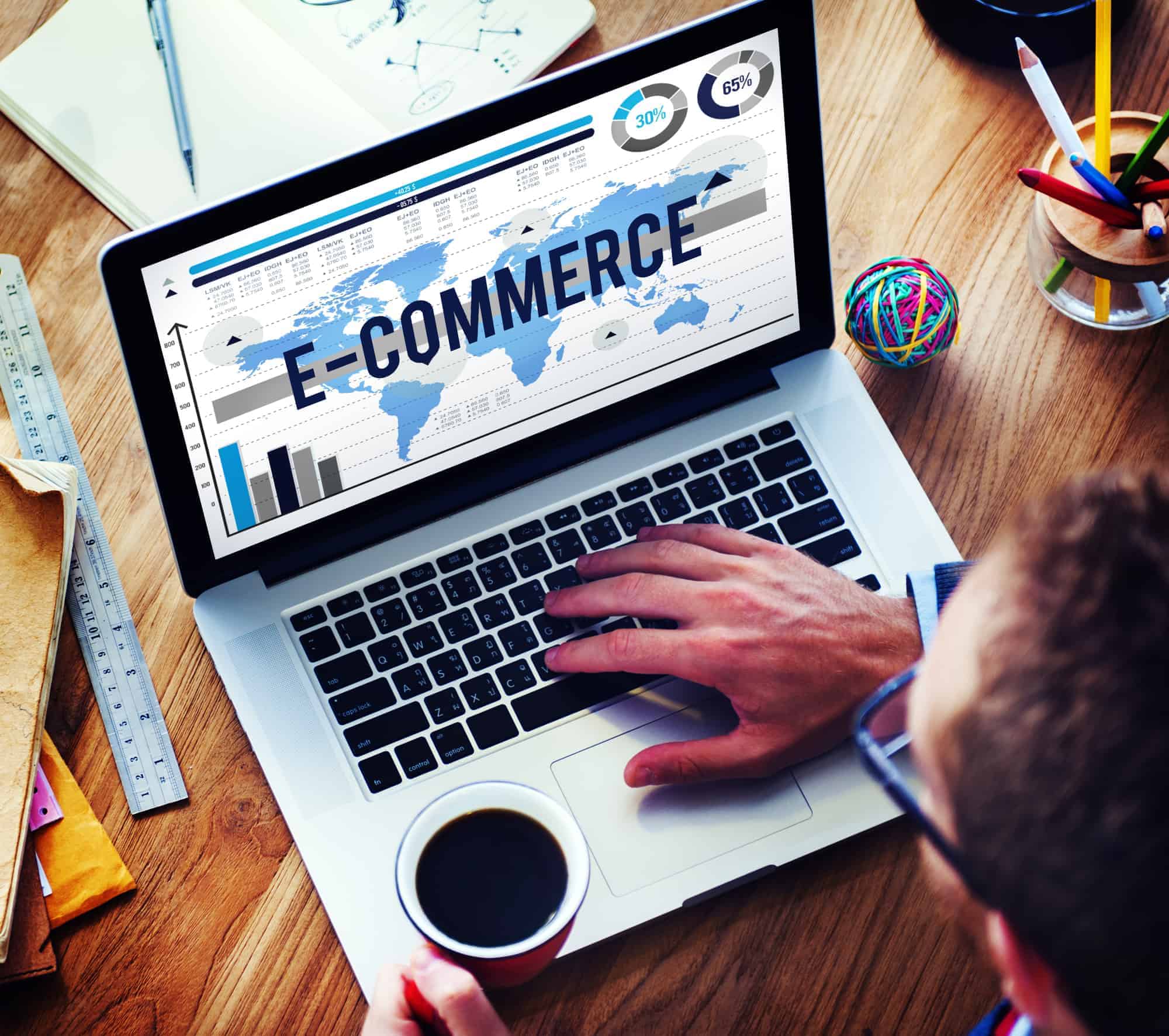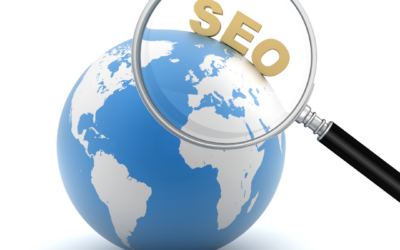Ecommerce Trends 2020: Everything You Need To Know
What’s New For eCommerce In 2020?
The History Of eCommerce
It’s no secret that the world of eCommerce has revolutionized retail.
It took approximately four years to develop proper security protocols needed for extensive online connection and purchasing. It took another two years to define the term “ecommerce” as the process of purchasing of available goods and services over the internet using secure connections and electronic payment software.
In the year 2000 many online ecommerce companies disappeared due to the “dot-com collapse”, but by then most retailers had seen and identified the opportunity of using the internet as a marketing and purchasing tool.
From 2000 to 2007 there was slow, but steady, growth in the ecommerce world, and by the end of 2007 ecommerce sales accounted for 3.4 percent of total sales.
Since 2007, the ecommerce industry has seen a massive amount of increase, and in 2019 ecommerce sales accounted for over 14% of all purchases. By the year 2040, it is estimated that nearly 95% of all purchases are expected to be via ecommerce.
Why Is It So Important To Stay Current With eCommerce?
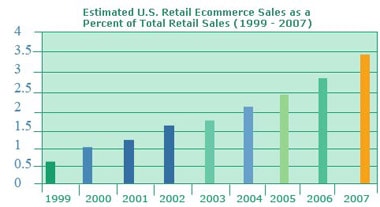
With the internet being the dominating form of marketing, merchandising, sales, and revenue it is vital that companies keep up to date with ecommerce trends.
Even if your store is predominantly in-store based, making use of the world’s largest commerce platform will be the driving force of success in the years to come.
Business continues to move online at a steady rate, especially as technological devices become more affordable and online infrastructure continues to improve. If your business is going to stay relevant in the next couple of years, there are some very important things you need to know about ecommerce.
Don’t forget, your competitors are doing the same research you are: if you aren’t staying up to date with them, you’re falling behind.
We’ve outline eight of the most important eCommerce trends that will help you keep up with competitors and give your shoppers the experience they’re looking for in 2020.
These practices are great “2.0” ecommerce solutions: this is assuming you’ve already used CRO and SEO principles on the rest of your site, and are ready to amp up your site for the new decade.
Focusing on voice shopping options when your site isn’t currently optimized for search engine rankings or easy conversion won’t do you any favors. Make sure that you’ve implemented the foundational basics of ecommerce, and then take advantage of the following resources.
Ecommerce Trends 2020: 8 Things You Need To Know
1. Mobile Optimization
In 2019, over half of all online purchases were made with a mobile device. That number is only expected to increase as Gen Z (consumers currently under the age of 23), the most mobile-friendly generation, start spending more revenue online.
Ecommerce growth is all about staying ahead of the curve, and paying attention to the trajectory of online shopping.
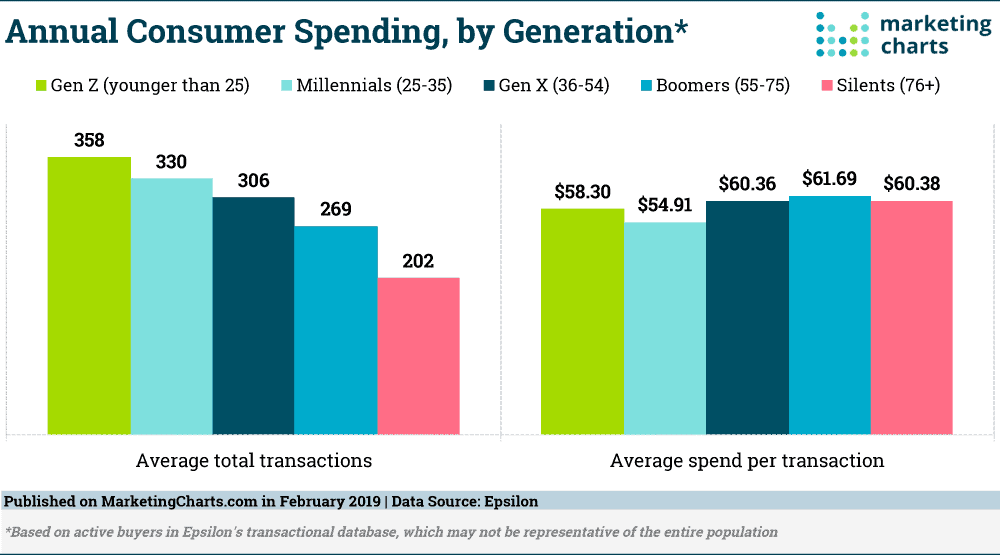
With recent advancements in technology, mobile devices are becoming more accessible and affordable to the general public. As more and more people convert to smartphones and tablets in place of desktop and laptop computers, the mobile ecommerce industry continues to advance.
As a business owner, if you want to optimize your site for conversions, you will need to create a shopping experience that appeals to your customers and makes it incredibly easy to complete their purchasing journey. Since more than half of your customers are likely coming from a mobile device, mobile optimization is more important than ever.
If you’re still not convinced, check out these startling mobile ecommerce statistics:
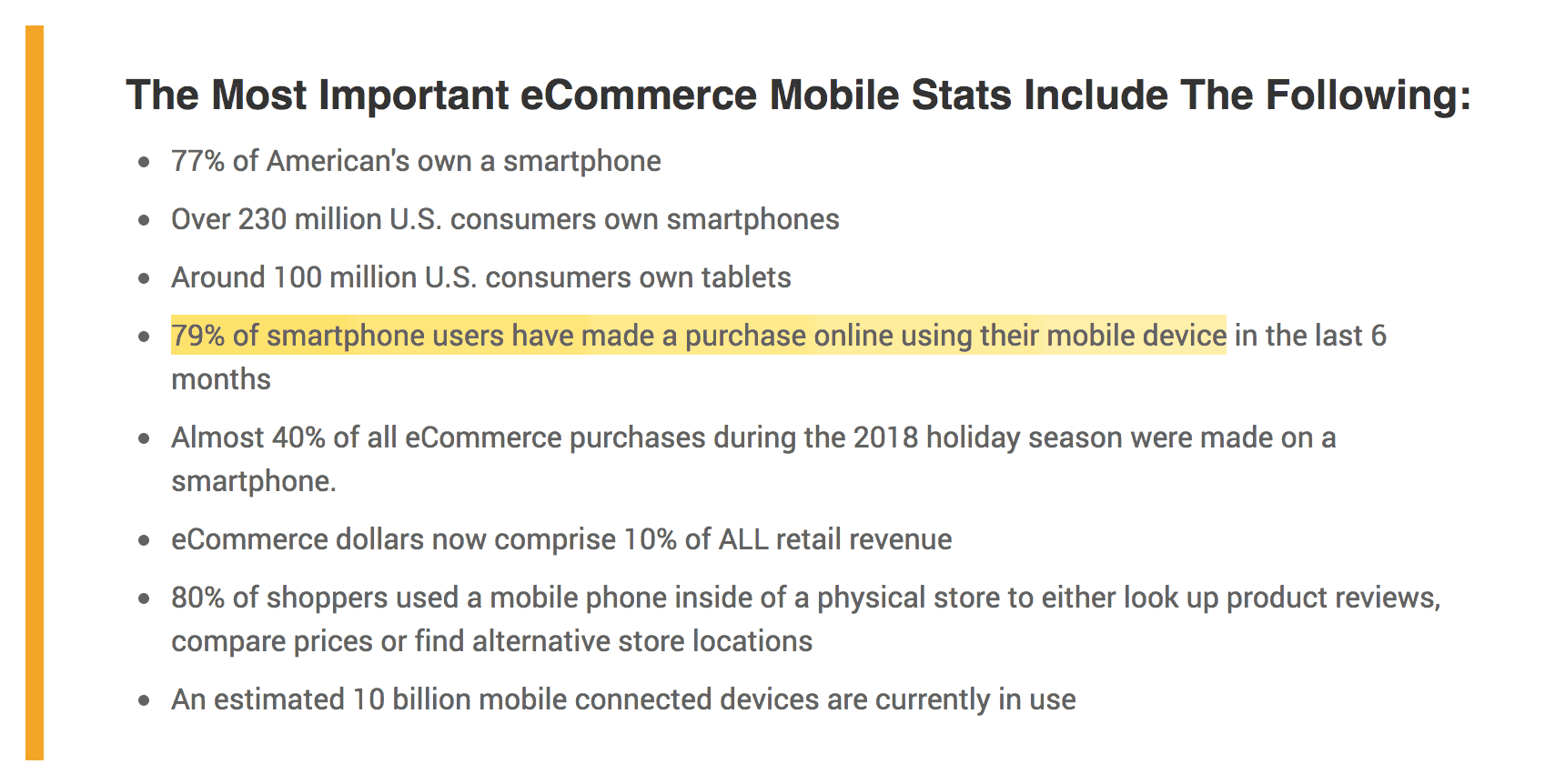
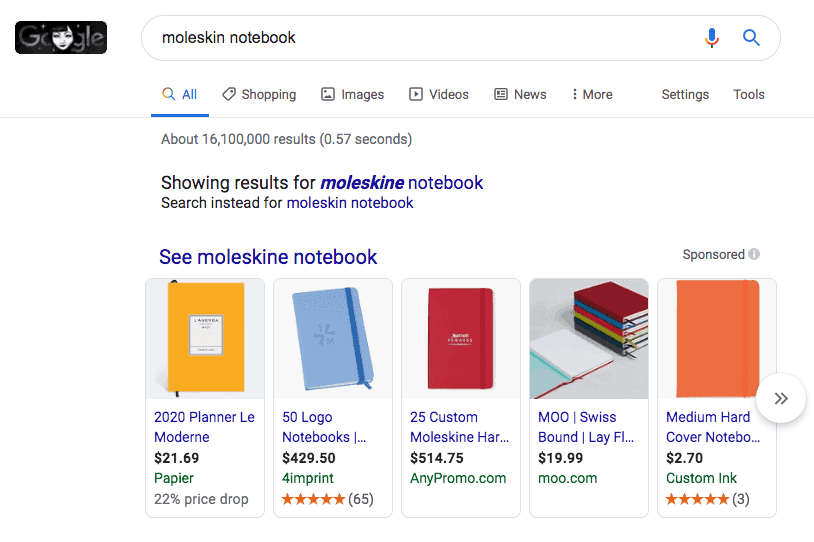
2. Google Shopping
If you’re a small-medium sized business, chances are most of your traffic is finding you through organic or paid web search.
It’s no secret that Google has dominated the online search industry. With the release of Google Shopping and Smart Shopping, there is opportunity for even small businesses to harness the power of Google to market your products.
Integrating an ecommerce platform with Google Shopping is taking advantage of an extremely powerful sales channel. Not only does it allow business owners to get products in front of more customers, it dramatically increases SEO rankings.
When an online store is integrated with Google Shopping, it creates product listing ads that are automatically displayed at the top of Google’s search engine results pages.
This feature is similar to Google Ads, which are text based, but they include images, pricing, and product details within the search engine. These direct links take customers to product pages and landing pages that are specifically targeted to their search query, and have been shown to increase sales by as much as 17%.
The integration is fairly straightforward: head to Google Merchant Center to sign up and run through a quick tutorial.
3. Social Media Shopping
It’s strange to think that social media hasn’t even been around that long. The first recognizable social media site was Six Degrees, created in 1997, which allowed users to upload a profile and make friends with other users.
That was only 23 years ago, but it was hardly the beginning of the social media network that we see in operation today.
Facebook was one of the first major social networking websites to create a global phenomenon, and it has only been in operation since February of 2004. Since then, social media has exploded and turned into a place for connection, friendship, marketing, and, more recently, purchasing.
Many social media platforms such as Instagram and Pinterest are turning into mini search engines of their own. An estimated 55% of online shoppers have bought a product directly through a brand’s social post.
Combine that with a simple one-click payment processing method (like Apple Pay, stored directly in your device), and shopping has never been easier for consumers.


4. Voice Shopping
Voice assistants are taking the ecommerce industry by storm. As the popularity of voice assistants (such as Siri, Alexa, Google Assistant, etc.) increases, it is transforming the ability to shop while doing other things.
Many users say they shop using voice assistant while they are driving in the car, cooking dinner, and even in the bathroom.
Being able to connect with users who are not even sitting in front of a screen is providing a new challenge in the SEO industry, but also a new opportunity.
Statistics are showing that by the end of 2020 over 30% of all searches will be done without a screen. And this voice assistant trend is not just limited to a certain age group. While Gen Z and Millenials are higher users of voice assistants, on average, consumers of all ages are making use of mobile personal assistants.
For more information on how to optimize your website for voice shopping, check out this quick video by Neil Patel.
By optimizing your website and content for voice search, you’re staying in league with your major competitors and opening the door for future sales growth.
5. Augmented Reality Technology
By 2022 over 120,000 stores will be using Augmented reality technologies, offering consumers a much richer purchasing journey.
Augmented reality technology shows a computer generated sensory in real world surroundings. A great example is Amazon’s new AR View feature on their website.

This augmented reality feature superimposes digital images onto a real-world background through your smartphone camera. This allows shoppers to visualize online products in their own living space. Another company using augmented reality technology is the clothing brand ASOS, with their “See My Fit” feature. This feature allows customers to see an item of clothing (ANY item of clothing) on a “model like them”.
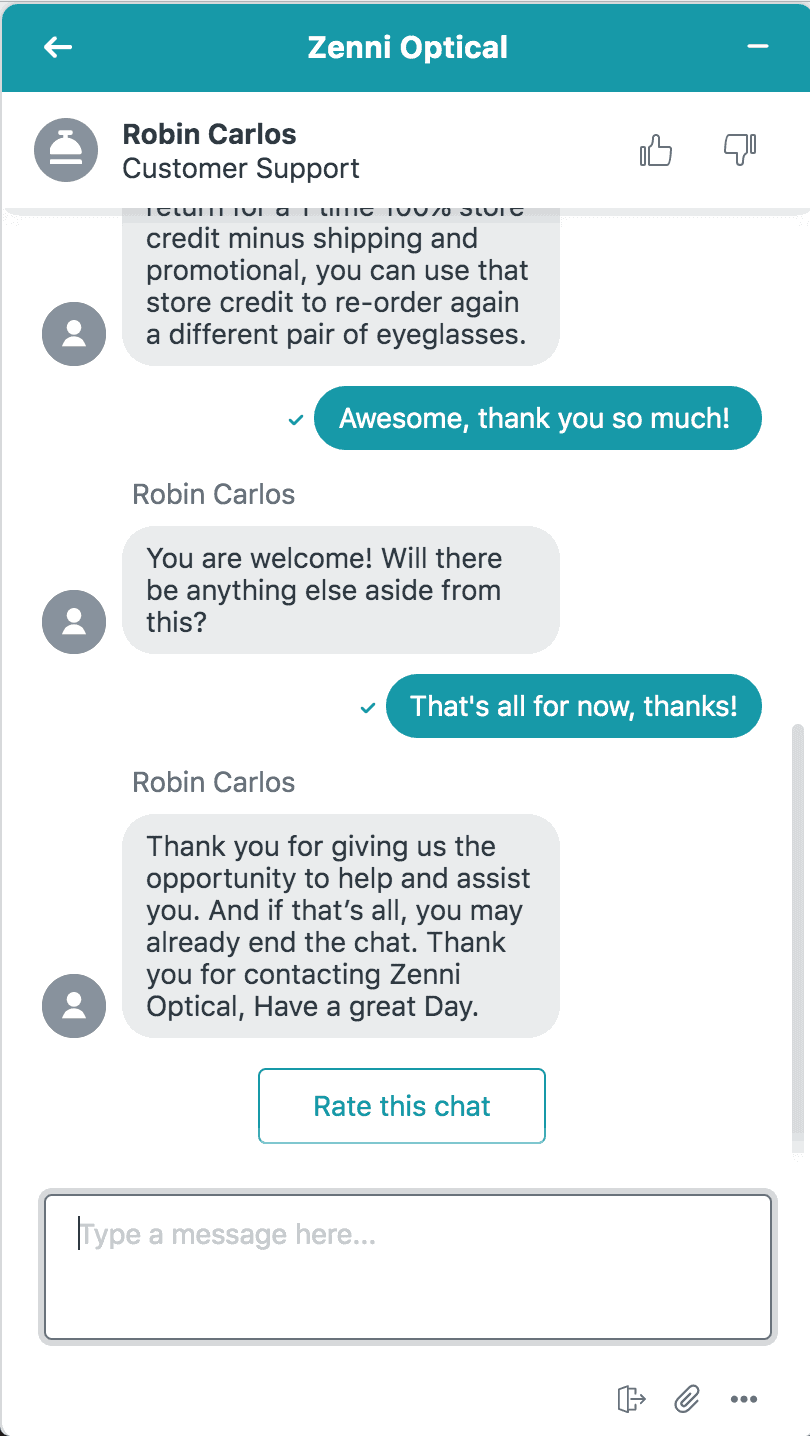
6. Real-time Conversations
One of the biggest factors for loss of conversion in ecommerce is consumer shopping hesitation. There are a whole list of reasons why a shopper might experience hesitation: lack of contact information, incomplete product details, questions on sizing, quality, or availability, and hundreds more.
Many business owners are finding a solution to shopper hesitation by offering 24/7 real-time conversation through Live Chat.
Real-time conversation allows customers to get answers to their questions quickly, and with ease. 24/7 access also sends a huge trust signal to online shoppers: should anything go wrong in the purchasing journey, around the clock support will be available to work through issues.
It can be difficult to provide 24/7 availability to all clients, so many businesses are implementing the use of chatbots onto their sites.
Chatbots can fulfill most customer needs, such as answering FAQ, responding to inquiries about products, and even discussing complaints.
Chatbots can handle a heavy volume of inquiries, and leave business owners free to focus on other areas of running a business.
7. Customization & Personalization
Artificial intelligence powered personalization is bringing a personal touch to online shopping.
By using AI-powered technology, many online businesses are using algorithms to review customer’s search queries, product page visits and transaction records to create tailored merchandising and advertisements.

This personalization strategy is also making it possible to follow up with customers in the future, sending them email campaigns alerting them to products and features they might be interested in.
By marketing directly to each individual consumer based on existing knowledge of their likes and behaviors businesses are seeing exponential growth in sales.
8. Alternative Payment Options
While it is possible to get by offering only one payment platform on your website, many customers are beginning to expect the ability to use their favorite payment method on all websites.
There is a growing popularity among services like Apple Pay, Square, and PayPal, and most users have a payment method pre-programmed into their mobile device. With a simple click of a button (literally!), many consumers are able to use these platforms to make purchases, even autofilling billing and shipping information.

The more your customers rely on this simplified shopping experience, the more likely it is that they won’t bother with a website that doesn’t give the option.
Another payment feature that many online businesses are using to generate more sales is offering a “Buy Now Pay Later” plan.
Offering your customers the ability to sign up for an easy payment plan makes purchases more palatable for buyers who are intimidated by a high price tag, even if they know the product is worth the cost. Breaking up the cost of a high-ticket item (like furniture, designer clothing, or tech and devices) can be the difference between a customer who backs out at the last minute (leaving you with one more abandoned cart), or a successful conversion.
eCommerce Trends 2020: Our Final Thoughts
By creating an organized strategy and by tackling these ecommerce trends, your online business will be well on its’ way to thriving, growing and flourishing.
But we also know this can be a daunting task. Do you need help optimizing your website to keep up with the competition? Do you need to offer your clients a richer, more rewarding purchasing journey?
Don’t worry, we’ve got the tools to make it happen! Contact us today for a consultation and free quote to get your eCommerce game going strong for 2020 and beyond.



